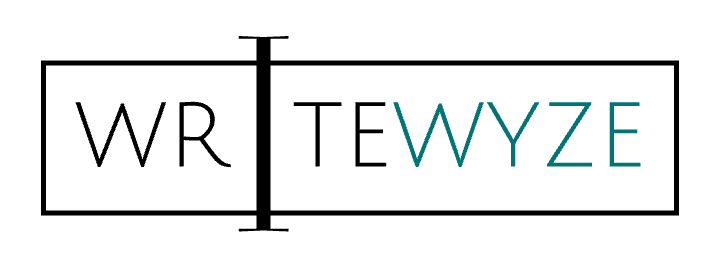
You’ve launched a great product. You’ve got smart founders, a promising market, and maybe even a bit of funding. So you start doing content. A blog goes up. Someone suggests a newsletter. LinkedIn posts trickle in. Maybe there’s even a podcast in the works. But something’s off. The content doesn’t move deals. Sales don’t share it. No one quotes it on Reddit or forwards it to a peer. You’re not top of mind when prospects go into buying mode. It’s not that your content is bad. It’s that it’s not building authority.
And that’s the gap between just publishing and actually influencing how your market thinks. Between noise and narrative. Between content and credibility. At Writewyze, we’ve seen this pattern play out across dozens of cloud-native companies. So we built a system to solve it:
The Authority Engine: a repeatable way to turn content into trust, influence, and pipeline momentum. This blog post will explore how it works, and how you can build one for your team.
Why great content still fails to build authority
Let’s start with a harsh truth. A great product isn’t enough to earn attention in the cloud-native space, especially if no one understands what it does or why it matters. Picture this: a fast-growing startup has built a tool that gives teams real-time visibility into Kubernetes spend. The tech works beautifully. Engineers love using it internally. But from the outside, it’s hard to tell. The homepage is packed with jargon like “observability-driven acceleration” and “next-gen cloud efficiency.” Their blog reads like a changelog; feature updates, minor release notes, and API tweaks. There’s no clarity on the problem they solve. No real perspective. No reason for anyone outside their bubble to care.
That’s not a content strategy problem. It’s a positioning and clarity problem. In short: it’s an authority problem.
What an authority engine actually is (And isn’t)
An Authority Engine isn’t just a content calendar or a library of blog posts. It’s a system that does three things:
- Builds trust with technical and business stakeholders
- Shapes how your market thinks about your space
- Drives action across the marketing funnels—organic, inbound, partner-driven, and sales-led
Now compare that to a typical “blog factory”, where teams crank out two posts a week, hoping for traffic but not seeing results. The volume’s high, but the impact is low. Authority content is different. It gets referenced in VC memos. It shows up in sales decks. It gets shared in Slack channels with a “worth reading” comment.
Imagine a startup that provides automated incident forensics for cloud-native platforms. After months of writing generic DevOps tips, they shift gears and publish a teardown of a real outage at a major fintech company, explaining what went wrong, why it mattered, and how their approach prevents similar failures. That one post hits Hacker News, gets linked in two newsletters, and is quoted on a VC’s podcast. Suddenly, inbound leads start opening with, “We saw your breakdown, do you work with platforms like ours?” That’s the difference. That’s thought leadership in action. That’s authority content doing its job.
Start with a sharp point of view
The first step isn’t writing; it’s deciding what you believe. What do you know that others don’t? What market assumption are you challenging? What’s your take that makes people stop scrolling?
Brian Halligan, co-founder of HubSpot, famously said, “The way people shop and buy has fundamentally changed.” That one line became the foundation of HubSpot’s content strategy, and helped define the inbound marketing movement. Great POVs often challenge assumptions, expose gaps in common thinking, or reframe a familiar problem. They’re not always controversial, but they are always specific. You don’t need to be loud. You need to be clear and a little courageous. That’s how you become a thought leader, not just a publisher.

Build for the full funnel (and every stakeholder)
Authority content shouldn’t be just for readers at the top of the funnel. It should help close deals, enable partners, and clarify value for every role involved in the buying process.
Here’s how we break it down:
- Top of Funnel → POV pieces, counter-narratives, industry takes
- Mid Funnel → Frameworks, deep comparisons, “how we think” essays
- Bottom Funnel → Case studies, validation stories, objection-handling content
Each format should serve a purpose; to create clarity for someone evaluating your product, recommending it internally, or selling it alongside you. Think beyond traffic. Think brand awareness. Think utility..
Use formats that let you go deep
Thought leadership isn’t built on shallow content. You won’t earn trust by publishing one-size-fits-all listicles or short product updates. You need formats that allow you to go deep, explain your thinking, and showcase technical clarity. Long-form technical breakdowns, founder essays, opinion articles, and short conceptual videos are some of the strongest ways to do this. Even internal sales narratives, when turned into public content, can signal maturity and product confidence.
For instance, imagine a company publishing a post that details how they migrated from a legacy cloud provider to their own Kubernetes-based control plane. It walks through tradeoffs, lessons learned, and metrics impacted. That kind of honest, specific content builds E-E-A-T: Experience, Expertise, Authoritativeness, and Trustworthiness. It’s what turns your team from content producers into subject matter experts.
Circulate, don’t just publish
Most companies treat publishing as the finish line. In reality, it’s just the starting point.
Authority content doesn’t live in isolation, it lives in the loops you build around it. After something goes live, ask: Would our sales team actually use this? Can it be distilled into a short video for LinkedIn? Is it strong enough to include in our investor update or partner newsletter?
The best-performing pieces often drive impact well beyond their original format. A blog post can become a conference slide. A teardown can become a podcast talking point. A founder essay can fuel dozens of social posts. Opinion articles don’t just sit in a blog archive. They get shared in community Slacks, emailed to prospects, and cited in product docs. Distribution is about making your content more usable, more visible, and more shareable across the people who matter. Content strategy isn’t done until your content is circulating.
Authority content = Long-term brand equity
It’s tempting to chase quick wins; optimize for a keyword, gate an e-Book, spin up a few paid campaigns. But the most valuable brands in cloud-native play a longer game. They build trust. They create mental availability. They become the default choice when the buyer is finally ready. Thought leadership builds that trust. And over time, it becomes your moat.
Authority content compounds. You’ll start seeing it in subtle ways: a spike in branded search. In bounds that reference something you published three months ago. Sales teams sending links to blog posts instead of rewriting the pitch themselves. More mentions on social media from people you’ve never met. The ROI here isn’t just traffic. It’s brand awareness, narrative control, and a growing industry authority that makes every other part of your go-to-market engine more efficient.
How we help: The authority engine system
At Writewyze, we don’t just create content, we build systems.
We call it the ARCH Framework:
- Assess → Audit your positioning, personas, and narrative gaps
- Reframe → Build a content strategy aligned to GTM goals
- Create → Craft technical, thought, and enablement content with depth
- Hone → Continuously improve with metrics, loops, and reuse
Whether you’re launching a PLG motion or preparing for Series C, your brand needs more than assets. It needs thought leadership that builds durable brand awareness and market presence. For cloud-native teams doing B2B SaaS marketing, this is how you stop being just another voice—and start being the one people trust.
Final thought: Reputation compounds
You don’t become a thought leader by calling yourself one. You become one by showing up, consistently, clearly, and with conviction. The best content resonates. It gets cited, shared, and remembered. It builds trust that your pipeline and your brand can rely on.
If that’s what you’re building, let’s talk. We’ll help you turn content into your strongest growth engine.
